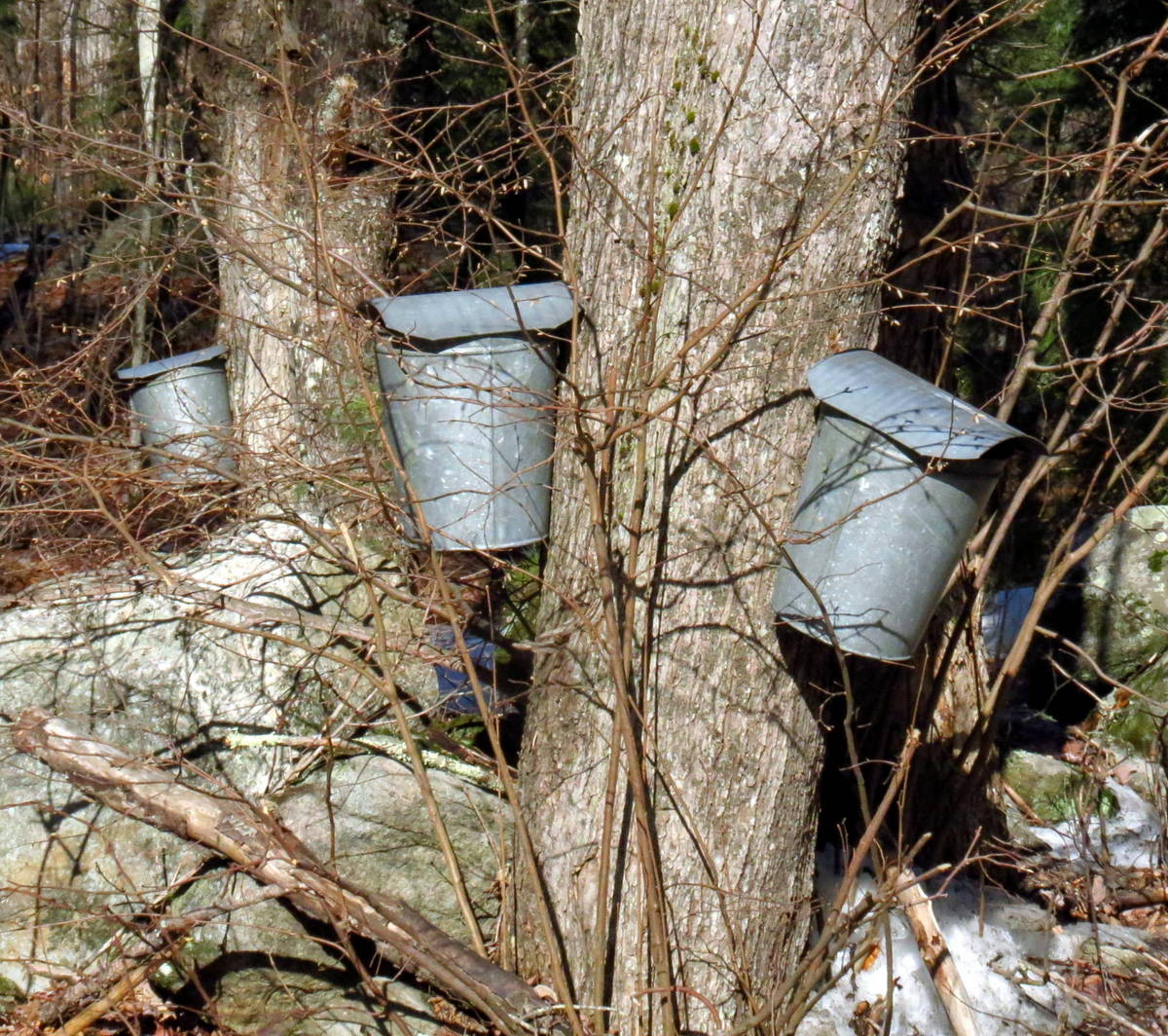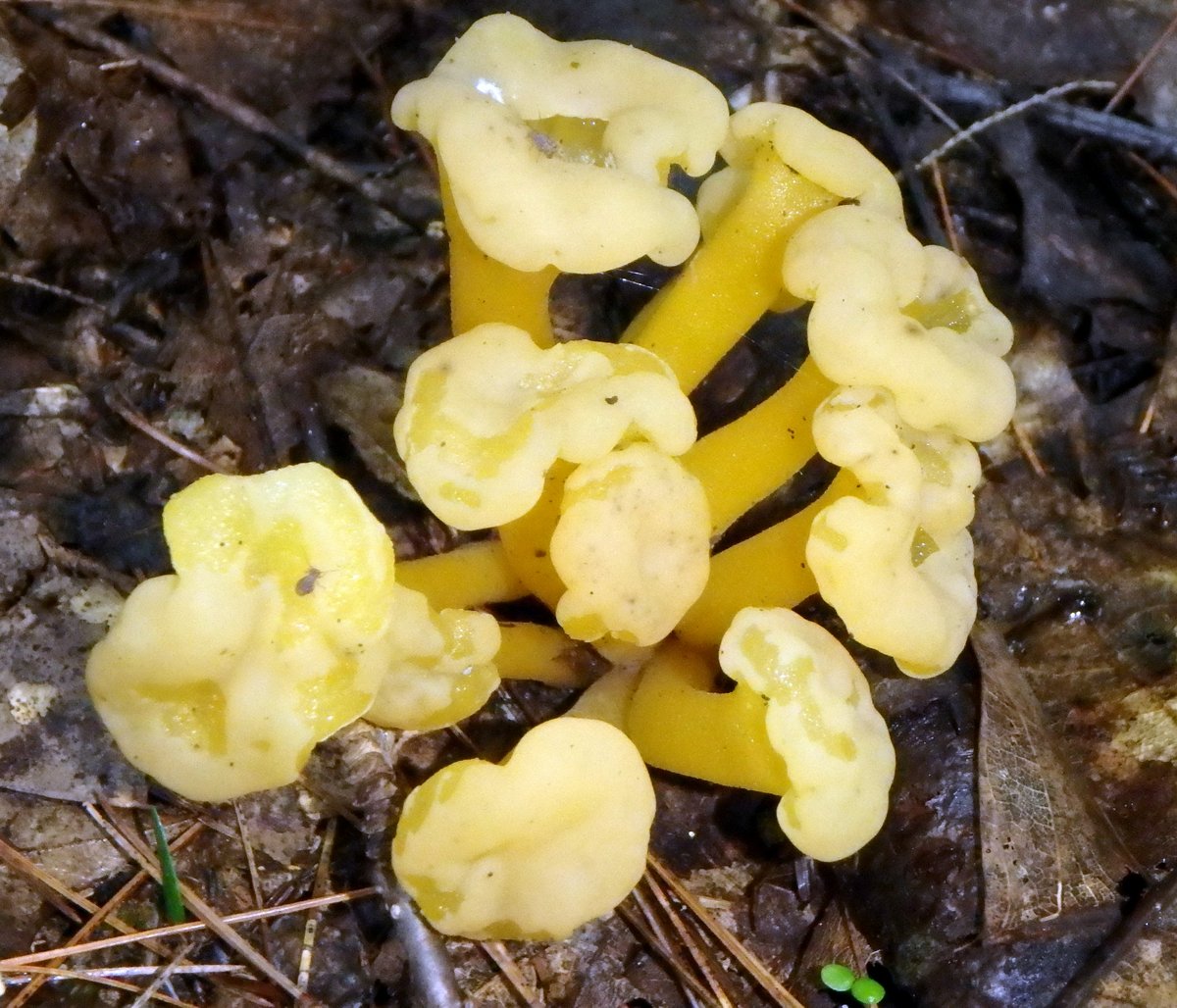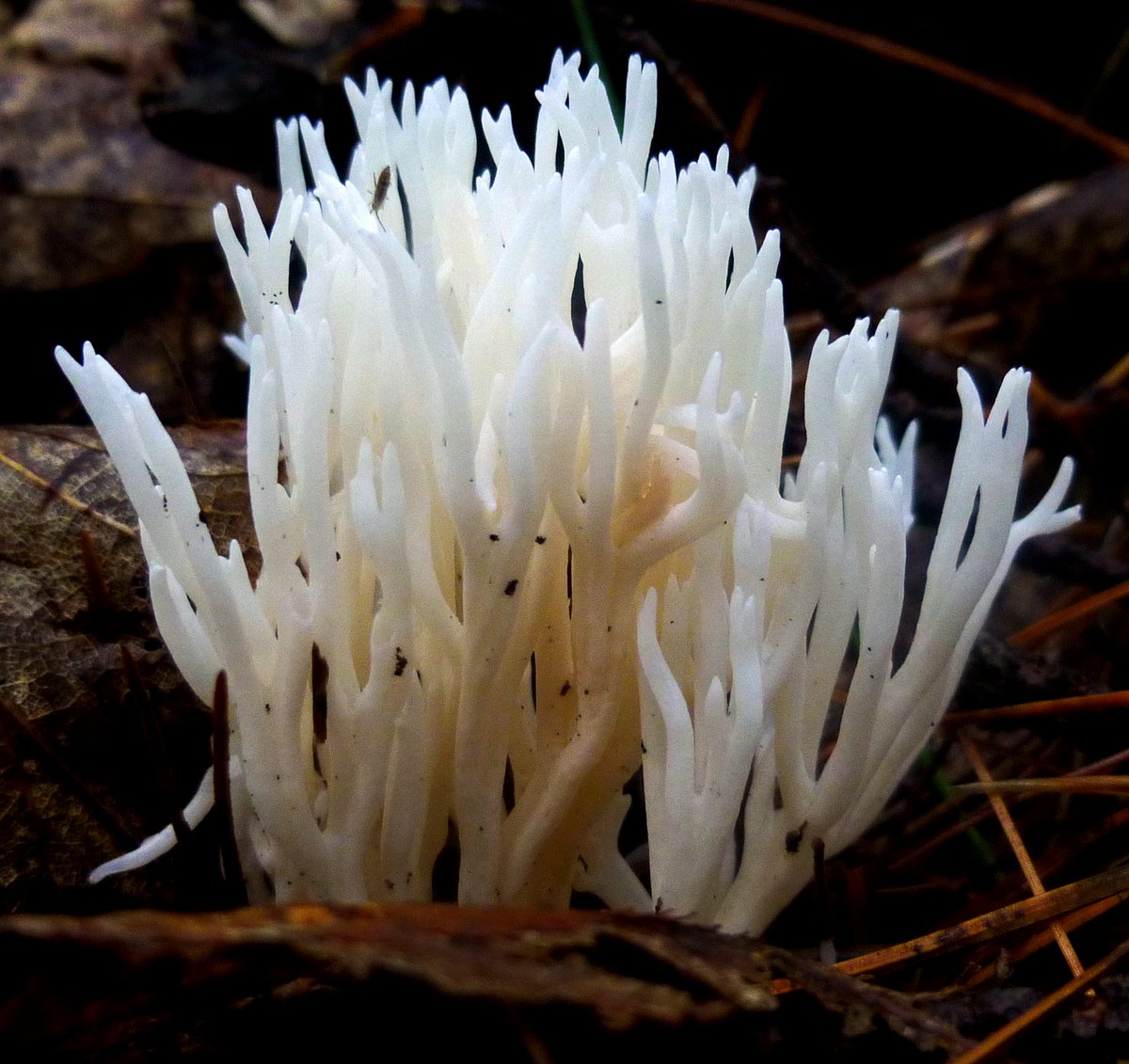
I had plans for last Friday; I took the day off from work to use up vacation time before I retire, and I was going to spend the whole day in the woods taking photos of interesting things for you to see, but nature had other plans. It started snowing at about 5 that morning and the roads were treacherous. I went out once (above) but quickly came home again, glad I didn’t have to drive for an hour. On Saturday I went to Beaver Brook and on Sunday we had pouring down freezing rain almost all day. So since I wasn’t able to get enough time outside, for the first time in almost 11 years I’m going to repost something I did a couple of years ago. It was quite a popular post then and I hope new readers will enjoy it. I also hope that regular readers won’t be bored by the repeat. I called it Nature Study 101.

Over the nearly nine years I’ve been doing this blog the question I’ve been asked more than any other is “How do you find these things?” So this post will be about how I find them; I’ll tell you all the secrets, starting with the jelly baby mushrooms above. Do you see how small they are? They’re growing in an acorn cap. The first time I saw them I was feeling winded and when I sat on a rock to rest, I looked down and there was a tiny clump of jelly babies, just like this one. That day a side of nature that I never knew existed was revealed and from then on, I started seeing smaller and smaller things everywhere I went.

You have to learn to see small by seeking out small things and training your eyes, and your brain somewhat, to see them. It also helps to know your subject. For instance I know that slime molds like the many headed slime mold above appear most often in summer when it’s hot and humid, and usually a day or two after a good rain. They don’t like sunshine so they’re almost always found in the shade. I’ve learned all of this from the slime molds themselves; by finding one and, not knowing what it was, looking it up to find out. I’ve learned most of what I know about nature in much the same way. If you want to truly study nature you have to be willing to do the legwork and research what you see.

Another secret of nature study is walking slowly. Find yourself a toddler, maybe a grandchild or a friend with one, or maybe you’re lucky enough to have one yourself. No older than two years though; they start to run after that and they’re hard to keep up with. Anyhow, watch a two-year-old on a trail and see how slowly they walk. See how they wander from thing to thing. They do that because everything is new and they need to see and experience it. You need to be the same way to study nature; become a toddler. Slowly cross and crisscross your line of progress. See, rather than look. Why is that group of leaves humped up higher than all the others? Is there something under them making them do that? Move them and see. You might find some beautiful orange mycena mushrooms like these under them.

So you need to train yourself to see small, to toddle and think like a toddler, and then you need to know your subject. All that comes together in something like this female American hazelnut blossom. I first saw them when I had toddled over to a bush to see the hanging male catkins, which are very beautiful, and out of the corner of my eye I saw a flash of red.

But all I could see was a flash of color because female hazelnut blossoms are almost microscopic. That’s a paperclip behind these blossoms. Even with eye problems I can find them though, because I know they’re tiny. I know they bloom in mid-April and I know they’re red and I know what shape the buds they grow out of are. All I need do is find one and the camera does the rest, allowing me to see its Lilliputian beauty.

That’s how I start the growing season each spring; by re-training my eyes to see small again. Most of what I see in winter is big so I need to get used to small again. Spring beauties like those above are as small as an aspirin, so they’re a good subject to start with. They’re also very beautiful and a forest floor carpeted with them is something you don’t soon forget.

Sometimes I’ll see something like this larch flower in a book or on another blog and I’ll want to see it in person. That’s what happened when I first found one, and I was surprised by how small they were. This is another example of my being able to only see a flash of color and then having to see with a camera. They’re just too small for me to see with my eyes but they’re beautiful and worth the extra effort it takes to get a photo of them.

I spend a lot of time looking at tree branches, especially in spring when the buds break. I’ve learned what time of month each tree usually blossoms and I make sure I’m there to see it happen. This photo shows male red maple flowers. Each flower cluster is full of pollen and the wind will be sure the pollen finds the female blossoms. When you see tulips and magnolias blooming it’s time to look at red maples. One of the extraordinary things about these blossoms was their scent. I smelled them long before I saw them.

Lichens aren’t easy to identify but there are easy to find because they grow virtually everywhere; on soil, on trees, on stone, even on buildings. But most are quite small, so walking slowly and looking closely are what it takes to find them. This mealy firedot lichen was growing on wet stone and that’s why the background looks like it does. You could spend a lifetime studying just lichens alone but it would be worth it; many are very beautiful.

Countless insects make galls for their young to grow in and the size and shape of them is beyond my ability to show or explain, so I’ll just say that I always make a point of looking for them because they’re endlessly fascinating, and you can match the gall to the insect with a little research. This one looked like a tiny fist coming up out of a leaf. Something else I like about them is that you don’t have to kneel down to see them. That isn’t getting any easier as time goes on.

When young the female spore capsule (sporangium) of juniper haircap moss is covered by a cap called a calyptra, which protects the spore capsule and the spores within. It is very hairy, and this is what gives this moss part of its common name. Eventually, as the capsule ages it moves from a semi vertical to a more horizontal position before the calyptra falls off. The spore capsule continues to ripen and when the time is right it will open and release the spores. When it’s time to release the spores the end cap (operculum) of the now reddish brown, 4 cornered but not square spore capsule will fall off and the spores will be borne on the wind. I learned all of that by studying the moss and reading about what I saw going on, and you can too. And you can do it with virtually anything you find in nature. To me, that is exciting.

A good memory isn’t strictly necessary for nature study but it can come in handy if you wish to see a plant in all stages of its life cycle. I knew where some rare dwarf ginseng plants grew in this area and I knew when they blossomed but I had never seen their seedpods, so I had to remember to go back to see what you see here. It might not look like much but it’s a rare sight and I doubt more than just a few have seen it. I often can’t remember my own phone number or where I parked my car but I can lead you right to the exact spot where this plant grows, so I seem to have two memories; one for every day and one for just nature. The one for nature works much better than the everyday one.

Develop an eye for beauty. Give yourself time to simply stand and look, and before long you’ll find that you don’t just see beauty, you feel it as well, all through your being. This is just tree pollen on water; something I’ve seen a thousand times, but not like this. On this day it was different; it usually looks like dust on the surface but this pollen had formed strings that rode on the current. I wasn’t looking for it; I just happened upon it, and that shows that a lot of what you see on this blog is just dumb luck. But I wouldn’t happen upon it if I wasn’t out there. That’s another secret; you have to be out there to see it. You’ll never see it by staring at a phone or television.

This is another rarity that I just happened upon; a mushroom releasing its spores. Mushroom spores are carried by the wind so it is unusual to see them dropping to the forest floor like they have in this photo. I’ve only seen this happen three times and twice it was on a still, hot, humid day. Once it was on a cooler but still humid day, without a hint of a breeze to blow the spores away. This is why it’s so important to walk slowly and look carefully. You could easily pass this without seeing it.

Something else that is rare to see is a mushroom with another fungus feeding on it, like this bolete with a mycoparasite called Syzygites megalocarpus growing on its cap. A mycoparasite is essentially a fungus that feeds on other fungi. This one has been found on over 65 species of mushroom. It can appear overnight if heat and humidity levels are just right, and that’s exactly what this one did. You can’t plan to see something like this, you simply have to be there when it happens.

Do you know how many puddles there are with ice on them in winter? I don’t either, but I do take the time to look at them and I almost always see something interesting when I do. I’ve never seen another one like this.

Sometimes if you just sit quietly unusual things will happen. I was on my hands and knees looking at something one day and I looked up and there was a fly, sitting on a leaf. I slowly brought my camera up and this is the result. By the way, much of what I see comes about because I spend a lot of time on my hands and knees. If you want to see the very small, you have to. And before I get back on my feet, I always try to look around to see if there’s anything interesting that I’ve missed.

I was crawling around the forest floor looking for I don’t remember what one day and saw something jump right in front of me. It was a little spring peeper. It sat for a minute and let me take a few photos and then hopped off. Another secret of nature study is to expect the unexpected. If you want to document what you see always have your camera ready. I have one around my neck, one on my belt and another in my pocket, and I still miss a lot.

I was in a meadow in Walpole climbing the High Blue trail when I saw a blackish something moving through the grass on the other side. Apparently, it saw me because it turned and came straight for me. When it got close I could see that it was a cute porcupine. I thought it must have poor eyesight and would run away when it got close enough but then it did something I never would have expected; it came up to me and sat right at my feet. I took quite a few photos and then walked on after telling it goodbye. I still wonder what it was all about and what the animal might have wanted. I’ve never forgotten how we seemed to know one another. It’s another example of why you have to expect the unexpected in nature. You just never know.

Sometimes all you need to do is look up. When was the last time you saw mare’s tails in the sky? There’s a lot of beauty out there for you to see, and you don’t really have to study anything.
So, what you’ve read here isn’t the only way to study nature. It’s simply my way; what I’ve learned by doing. I had no one to guide me, so this is what and how I’ve learned on my own. I thought that it might help you in your own study of nature, or you might find your own way. It doesn’t matter as long as you’re out there having fun and enjoying this beautiful world we live in. I’ll leave you with a simple summary that I hope will help:
- To see small think small. There is an entire tiny world right there in plain sight but there’s a good chance you haven’t seen it. Nothing is hidden from the person who truly sees.
- Don’t just look, see; and not just with your eyes. Use all your senses. I’ve smelled certain plants and fungi before I’ve seen them many times. I also feel almost everything I find.
- Walk at a toddler’s pace. Cross and crisscross your path.
- Know your subject. You probably won’t find what you hope to unless you know when and where it grows, or its habits. When you see something you’ve never seen if you want to know more about it research it.
- Be interested in everything. If you’re convinced that you’ve seen it all then you’ll see nothing new. Run your eye down a branch. Roll over a log. Study the ice on a puddle.
- Expect the unexpected. I’ve heard trees fall in the forest but I’ve never seen it happen. Tomorrow may be the day.
- Develop an eye for beauty; it’s truly everywhere you look. Allow yourself to see and feel it. Appreciate it and be grateful for it and before long you too will see it everywhere you go.
- Let nature lead. Nature will teach you far more than you’ve ever imagined. It will also heal you if you let it, but none of this can happen if you spend all your time indoors.
- None of the things you’ve read here are really secrets. Nature is there for everyone and you can study it and take pleasure in it just as easily as I can.
- Have fun and enjoy nature and you’ll be surprised how quickly your cares melt away. Problems that once might have seemed insurmountable will suddenly seem much easier to solve.
To look at any thing,
If you would know that thing,
You must look at it long.
~John Moffitt
Thanks for stopping in.
















































































